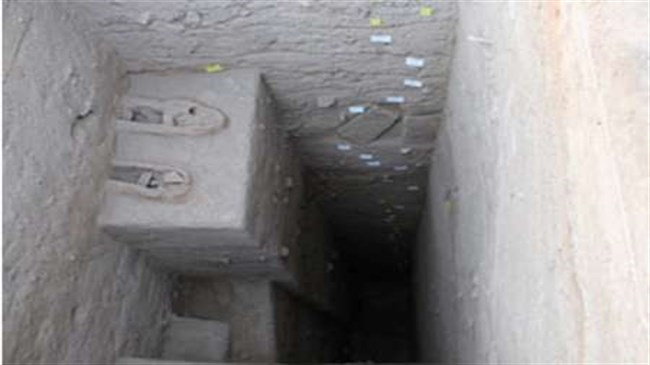Iranian archeologists trace industry footprints around Persian Gulf
Iranian archeologists trace industry footprints around Persian Gulf
 |
Objects excavated in the historic site of Tom Maroon in the province of Hormuzgan on the Persian Gulf suggest that during the Bronze Age the inhabitants of the region were involved in industrial activities such as metalwork, glassmaking and pottery.
The research institute of the Iranian cultural heritage, the arts and tourism organization, quoted the chief of the excavation team Siamak Sarlak, that the archaeologists looked at two oval furnaces, weldments, furnace slags and glass fountains during their excavations.
He also noted that among the objects a glass button-like seal, which may be important for the analysis of economic relations between Tom Maroon and other regions during this period.
He named the objectives of the current excavation phase as the identification of the subsequent cultural epochs of the region, the creation of a chronology of the area, and the definition of the role and importance of the area in shaping cultural relations of the communities on the northern and southern shores of the Persian Gulf The Bronze Age until the Islamic period.
Sarlak quoted other aims of the excavation as an understanding of the instinctive features of the region in developing the cultural perspectives of the communities living in the region, especially in the Bronze Age, carrying out research in the cultural history of the Persian Gulf and collecting new documents The aim is to clarify the historical situation and importance of the Persian Gulf.
The third phase of the explorations will be until the middle of March 2017 in view of the cultural peculiarities of the region and coordination with the Institute of Archeology and Hormuzgan Cultural Heritage, he added.
Sarlak pointed out that in the second season of the excavations about 7.5 meters of accumulated layers and cultural property of the area were questioned. He added that nine main and two subphases of Parthian architecture were identified.
Based on the documents obtained during the exploration of Tom Maroon, Sarlak noted that the most important building material used in the architecture of the Parthian era is large-format adobes with clay mortar.
He said until three decades ago, there were five satellite hills around Tom Maroon, which were now completely leveled to the ground and converted into citrus plantations and currently only a small part of Tom Soltan Miran, 800 meters of Tom Maroon, remained intact.
The archaeologist emphasized that on the basis of the documents received in the excavations on the southern slopes of Tom Maroon, four cultural periods, including the ancient Bronze Age, the Parthian era, the Sassanid era, and the early centuries of the Islamic period were identified .
He said the Persian Gulf is considered one of the important regions in the archaeological studies of Iran and ancient Orient in view of its strategic location.
Archäologische Untersuchungen, die in Hormuzgan, der alten Steinzeit, der alten Bronzezeit, dem Parthischen, dem Sassaniden und den islamischen Epochen (insbesondere den Safaviden) wurden in der Region blühende Kulturen und Zivilisationen existierten.
Tom Maroon befindet sich in der Provinz Hormuzgan in einer fruchtbaren alluvialen Ebene, bekannt als Komiz Plain, umgeben von niedrigen Bergen.
